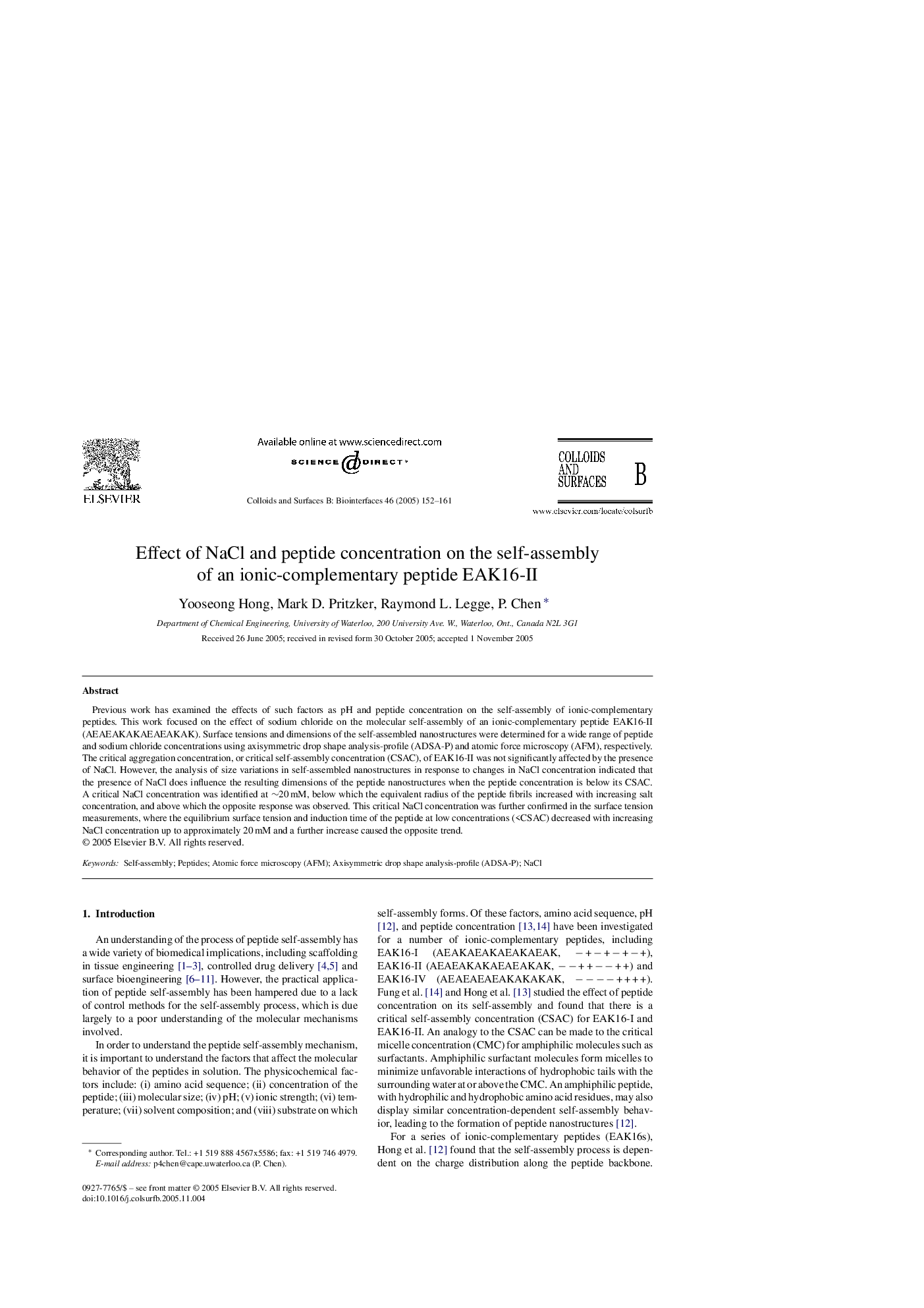| Article ID | Journal | Published Year | Pages | File Type |
|---|---|---|---|---|
| 10374927 | Colloids and Surfaces B: Biointerfaces | 2005 | 10 Pages |
Abstract
Previous work has examined the effects of such factors as pH and peptide concentration on the self-assembly of ionic-complementary peptides. This work focused on the effect of sodium chloride on the molecular self-assembly of an ionic-complementary peptide EAK16-II (AEAEAKAKAEAEAKAK). Surface tensions and dimensions of the self-assembled nanostructures were determined for a wide range of peptide and sodium chloride concentrations using axisymmetric drop shape analysis-profile (ADSA-P) and atomic force microscopy (AFM), respectively. The critical aggregation concentration, or critical self-assembly concentration (CSAC), of EAK16-II was not significantly affected by the presence of NaCl. However, the analysis of size variations in self-assembled nanostructures in response to changes in NaCl concentration indicated that the presence of NaCl does influence the resulting dimensions of the peptide nanostructures when the peptide concentration is below its CSAC. A critical NaCl concentration was identified at â¼20Â mM, below which the equivalent radius of the peptide fibrils increased with increasing salt concentration, and above which the opposite response was observed. This critical NaCl concentration was further confirmed in the surface tension measurements, where the equilibrium surface tension and induction time of the peptide at low concentrations (
Related Topics
Physical Sciences and Engineering
Chemical Engineering
Colloid and Surface Chemistry
Authors
Yooseong Hong, Mark D. Pritzker, Raymond L. Legge, P. Chen,
